LilyPad XBee
The LilyPad XBee is a breakout board for the popular XBee modules that can be sewn into your e-textile projects to provide them with a little "connectivity." This board includes easy-to-sew tabs and all the necessary power regulation to run on the LilyPad system. Once sewn into your project just attach your favorite XBee to the pre-soldered headers and you are good to go!
LilyPad is a wearable e-textile technology developed by Leah Buechley and cooperatively designed by Leah and SparkFun. Each LilyPad was creatively designed to have large connecting pads to allow them to be sewn into clothing. Various input, output, power, and sensor boards are available. They're even washable!
LilyPad XBee was co-developed by Kate Hartman and Rob Faludi. It works with all the popular XBee module types!
Note: This LilyPad board does NOT include and XBee module.
Note: A portion of this sale is given back to Dr. Leah Buechley for continued development and education of e-textiles and to Rob Faludi and Kate Hartman for product support and continued development.
- 50mm outer diameter
- Thin 0.8mm PCB
LilyPad XBee Product Help and Resources
Exploring XBees and XCTU
March 12, 2015
How to set up an XBee using your computer, the X-CTU software, and an XBee Explorer interface board.
Core Skill: DIY
Whether it's for assembling a kit, hacking an enclosure, or creating your own parts; the DIY skill is all about knowing how to use tools and the techniques associated with them.
Skill Level: Noob - Basic assembly is required. You may need to provide your own basic tools like a screwdriver, hammer or scissors. Power tools or custom parts are not required. Instructions will be included and easy to follow. Sewing may be required, but only with included patterns.
See all skill levels
Comments
Looking for answers to technical questions?
We welcome your comments and suggestions below. However, if you are looking for solutions to technical questions please see our Technical Assistance page.
Customer Reviews
No reviews yet.

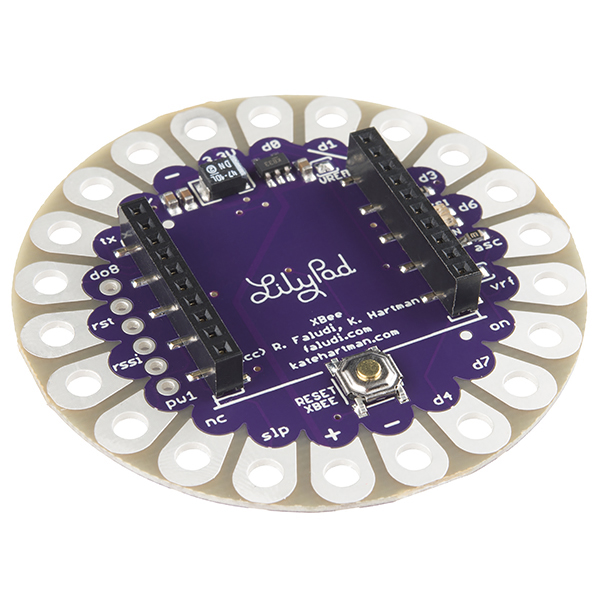
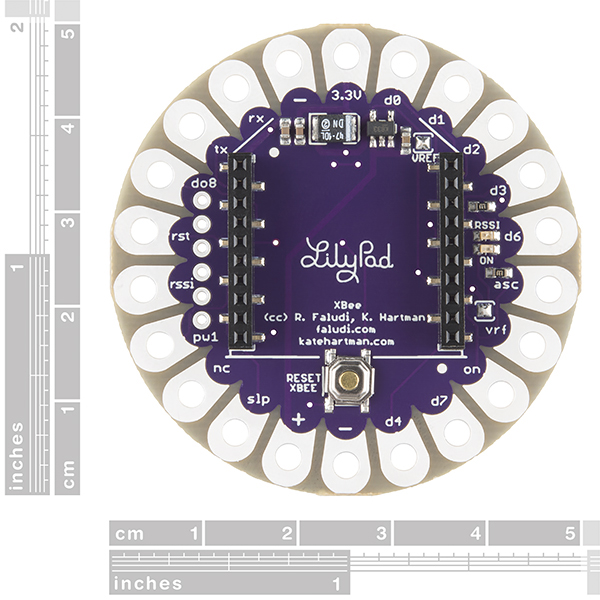
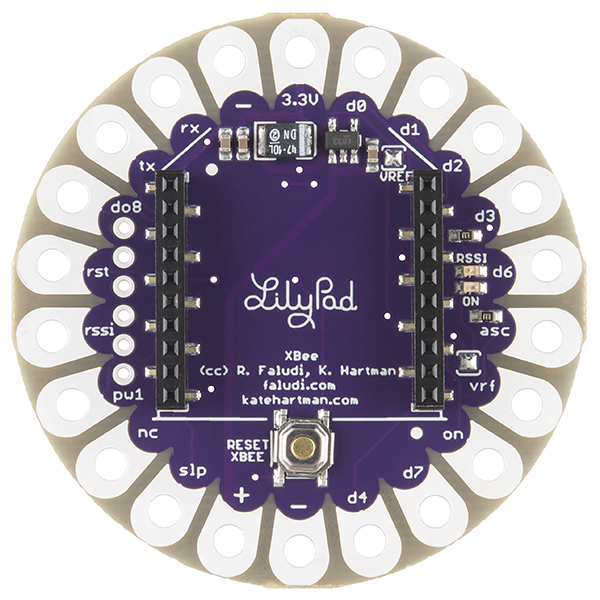
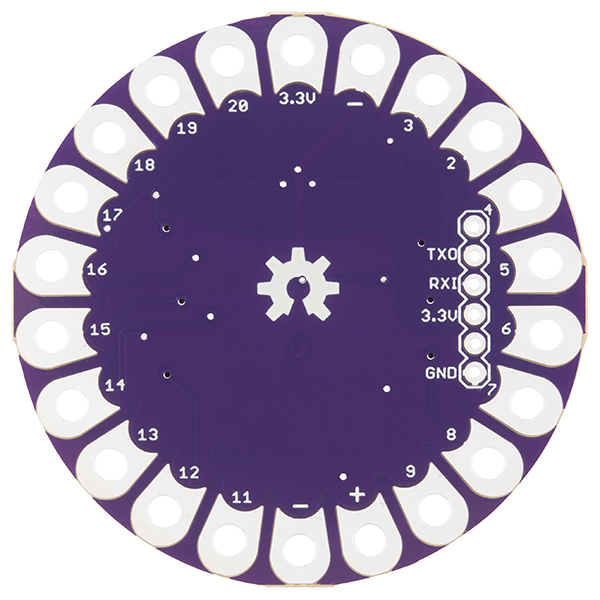
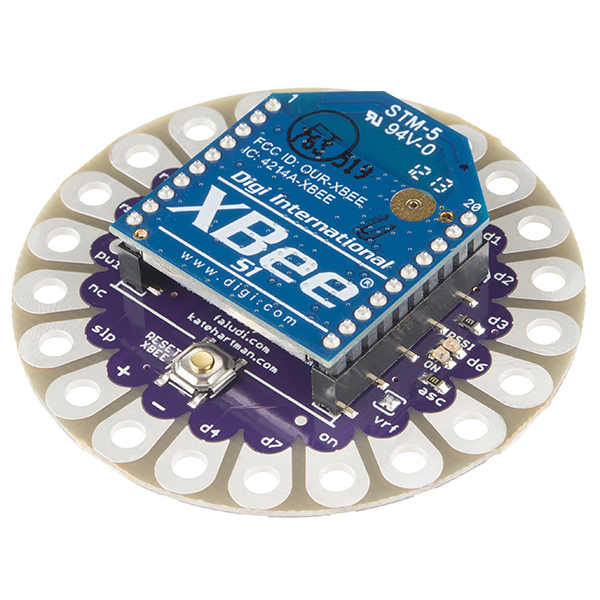
Am I missing something, looking at the pinouts for this device I can only see about X4 analog outs to control a led ? There seems all this microprocessing power to drive a handful of LED's, might as well use a 555 timer....
Label Description XBee Pin d08 digital output 8 (not supported yet) 4 rssi received signal strength indicator / PWM output 0 6 pw1 PWM (pulse-width modulation) output 1 7 d4 analog input 4 / digital input/output 4 11 d7 digital input/output 7 / CTS 12 on ON light output 13 asc association light output / analog input 5 / digital i/o 5 15
Hi there, I can't seem tdo find any definitive answer but does this work as a standalone lilypad or do you have to use a lilypad in conjunction with this? Most tutorials I see describe connecting the tx and rx from these to the standard lilypad but can you also hook up sensors to this board? If so, how many? And can they be digital or analog or what?
This board is just a breakout for the XBee module. There is no microcontroller or anything other than what is present on the XBee module. So, the answer really depends on your XBee and knowledge of how to use it. I know some of the modules can read an analog or digital signal and mimic that signal on another XBee on the network. There are also other modules out there that use the XBee footprint and may have additional functions. So, this board was designed to be used with a Lilypad microcontroller, but it is not necessarily limited to that function.
Ah okay, so it's not just a standard lilypad board with it's own microcontroller and IC chip that just happens to have an Xbee on top of it - if I understand you correctly.
Thanks!
That is correct.
Hello, is this product SDA and SCL compatible, if so, does this item also include the bluetooth module, or does that need to be attached later on. Lastly, how do you attach this to clothing items, or make the wiring work. Do I just use conductive thread and use it as wiring? Thank you
Hello, what is the reference of the regulator? regards
I can't understant which voltages it works with. Does it works with a 3V button cell? Or does it need 5V and then it regulates to 3.3V?
The board does have a built in regulator, but you can bypass it and connect to the 3.3V line. As for a 3V button cell, if you are bypassing the regulator then you are really bypassing all the circuitry on the board. There is nothing on the board that requires power, at least until you add your XBee compatible module. The question then is if the XBee can be powered by a 3V button cell. While that will depend on the actual module I doubt it. Wireless devices need a decent amount of power to transmit data and I doubt a coin cell will be able to provide that (or provide it for very long). Again, it does depend on your module and your coin cell.
How do you get this damn thing to work???? Arghhhh
Rob Faludi's book on Wireless Sensor Networks is an excellent introduction to XBees, and Kate Hartman's Make: Wearable Electronics covers this Lilypad XBee socket too.